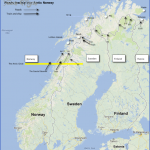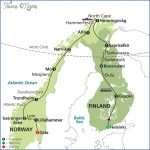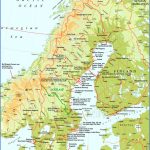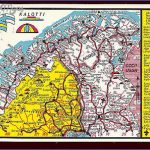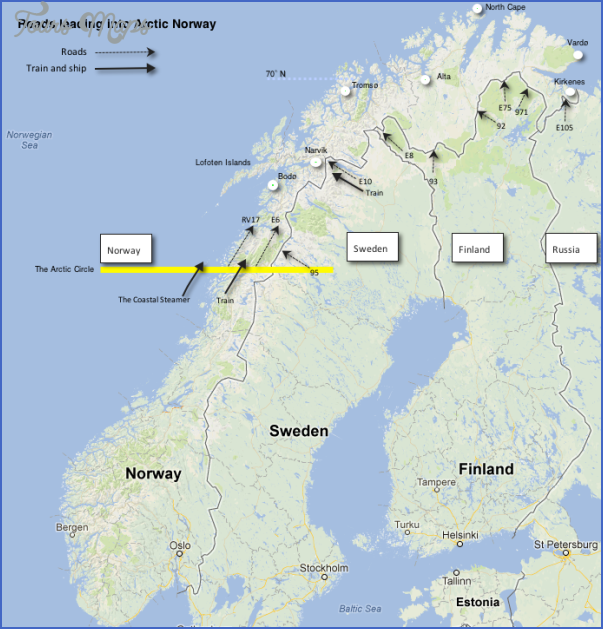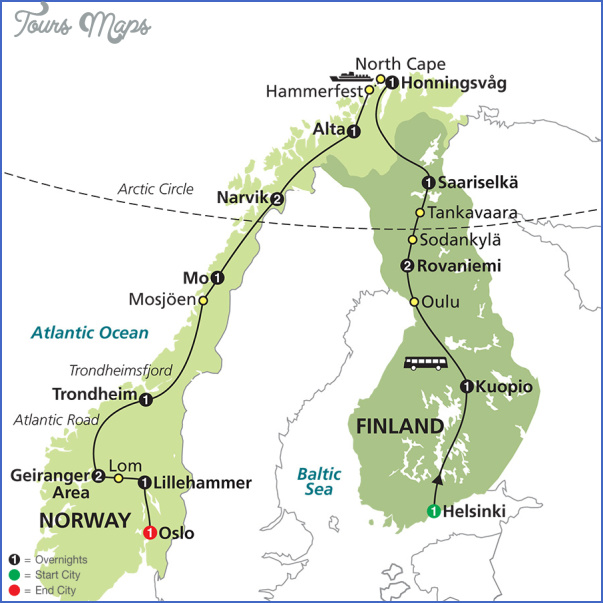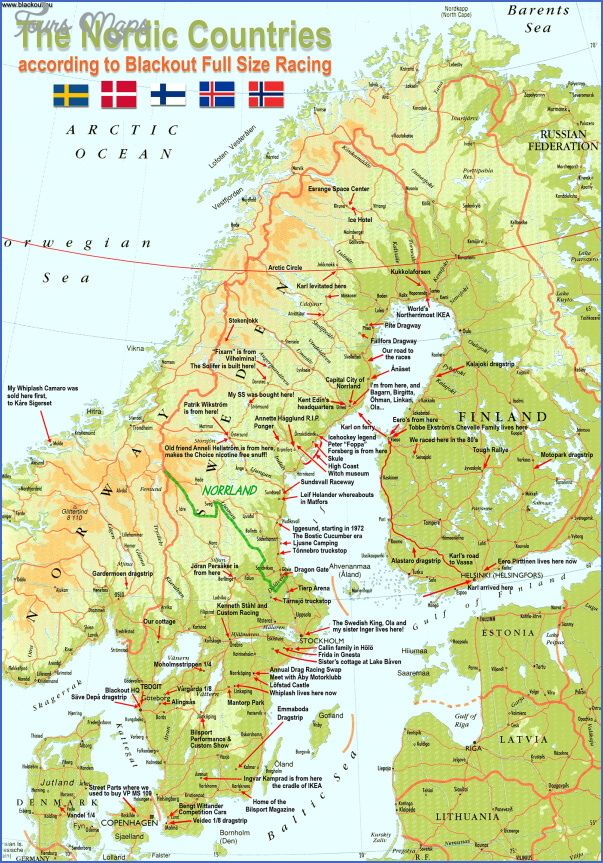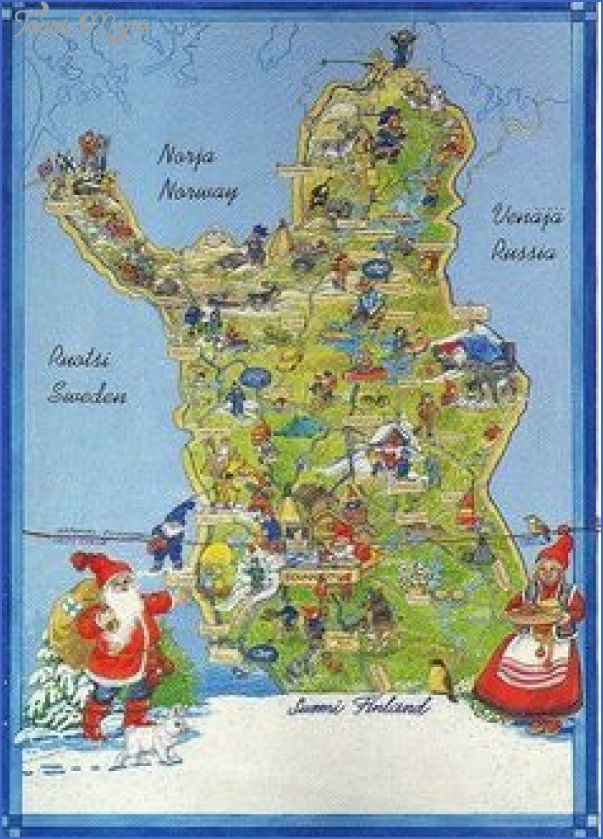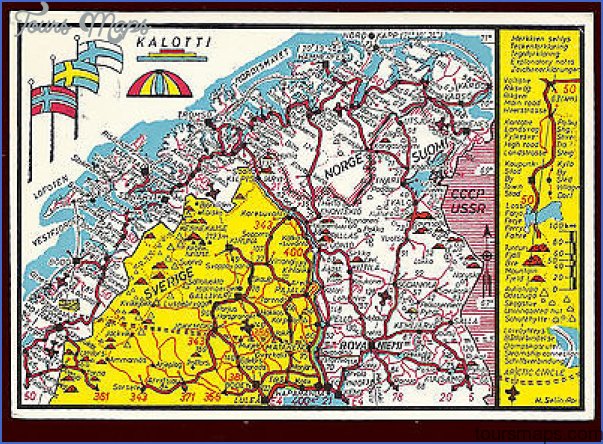The Arctic Circle is an imaginary line around the earth at latitude 66-5° N beyond which the length of the day so increases in summer that the sun never sinks below the horizon and the phenomenon known as the midnight sun can be observed. It also separates the northern temperate zone from the polar climatic zone. In Norway the Arctic Circle (Polar-cirkel) runs just N of Mo i Rana, in Sweden (Polcirkeln) near Jokk-mokk, in Finland (Napapiiri) a bit N of Rovaniemi.
The different lengths of day and night in all latitudes except on the Equator are due to the angle of 23-5° between the earth’s equatorial plane and the plane of its orbit.
At the summer solstice (22 June) the apparent course of the sun at the Arctic Circle reaches its greatest northern declination (i.e. its greatest angular distance N of the celestial equator), so that at midnight the sun is still in the sky. In a clear sky this midnight sun is an impressive sight, but even when the sun is obscured by mist orclouds its glowing red ball in the night sky is a memorable spectacle.
Exactly on the Arctic Circle the midnight sun is visible on only one day in the year, but farther N the length of this arctic day steadily increases. At the North Pole the polar day should in theory last exactly half a year, but the refraction of the sun’s rays in the earth’s atmosphere makes it slightly longer thanthis. The altitude from which it is observed also affects the length of time during which the midnight sun can be seen, since the published data are calculated for sea level. Thus an observer on a
Stone marking the Arctic Circle in northern Norway hill can see the midnight sun some distance S of the Arctic Circle.
The parts of Norway, Sweden and Finland N of the Arctic Circle the Land of the Midnight Sun are also known in Scandinavia as Nordkalotten (Finnish Pohjoiskalotti), the Northern Cap.
The Arctic Circle also marks the approximate southern boundary of the Northern Lights or Aurora Borealis. This phenomenon is caused by electrically charged particles emitted by the sun being caught up by the earth’s magnetic field. These particles produce striking light effects in the thin ionised upper atmosphere at heights between 70 and 1000 km (40 and 600 miles). The sky is lit up by bluish arcs of light, glowing coronas and shimmering curtains of radiance flaring over the sky in constant movement, offering the fortunate spectator an unforgettable experience.
Arctic Circle: Norway, Sweden and Finland Photo Gallery
Maybe You Like Them Too
- The Best Cities To Visit in The World
- World’s 10 Best Places To Visit
- Coolest Countries in the World to Visit
- Travel to Santorini, Greece
- Map of Barbados – Holiday in Barbados

